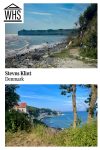Stevns Klint
By Agalya Saravanan
What is Stevns Klint?
Stevns Klint is a 17 km-long (10.6 mi), fossil-rich limestone cliff located along the Baltic coast on Zealand Island of Denmark. It stretches from Bøgeskov Harbour in the north to the port town of Rødvig in the south. The most famous and scenic spot is at Højerup, where you can see the fish clay sediment for which the site is famous.

Disclosure: This article contains affiliate links. Making a purchase through an affiliate link will mean a small commission for this website. This will not affect your price. Privacy policy.
Why is Stevns Klint a UNESCO World Heritage site?
This cliff holds important evidence of the Chicxulub asteroid, which triggered the fifth mass extinction 66 million years ago, and the catastrophic impact it had, wiping out the dinosaurs as well as half of all life on earth. It contains an exceptional fossil record of the “most diverse end-Cretaceous marine ecosystem known,” according to UNESCO, as well as evidence of which species survived and how biodiversity evolved and increased after the impact.
The most fascinating feature here is the K/T boundary (Cretaceous-Tertiary, although it’s officially called the Cretaceous-Paleogene or K/Pg boundary). This geological marker separates two worlds—the Cretaceous period, when dinosaurs roamed freely, and the Paleogene period, when they were gone.
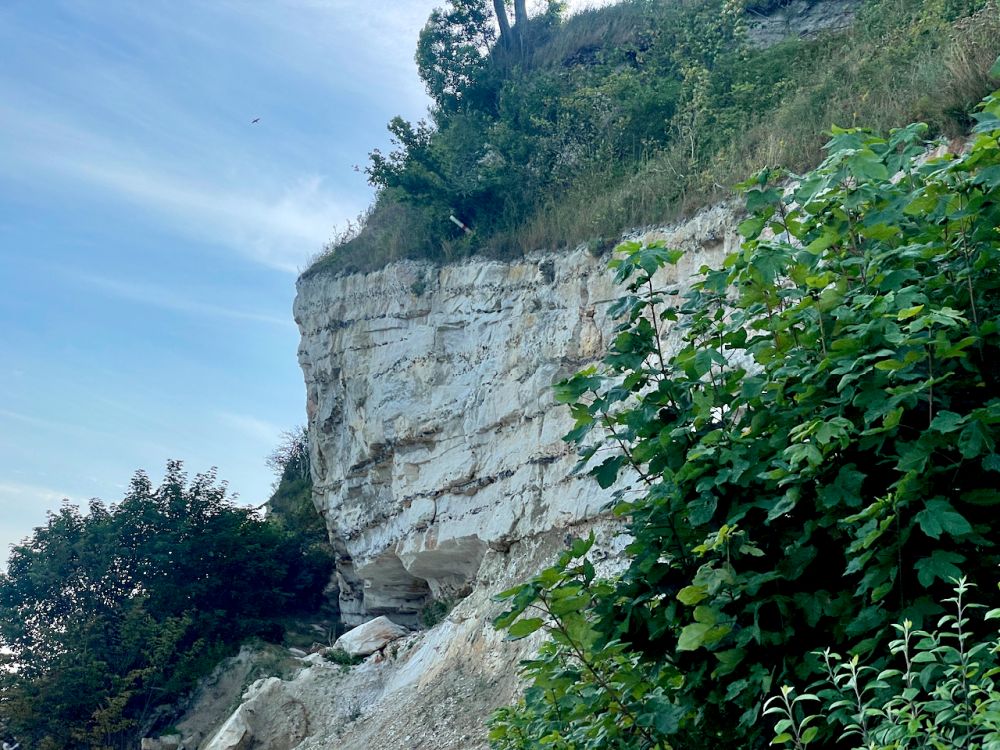
The K/T boundary is a thin, iridium-rich layer, visible in the cliff as a dark layer between the white chalk and the yellow limestone. Iridium is rare on Earth but common in meteorites, offering direct evidence of the catastrophic asteroid impact.
Fish clay is a thin, greyish-brown sediment layer that’s part of the K/T boundary. It contains high levels of iridium. UNESCO says, “Stevns Klint is highly significant in terms of its past, present and future contribution to science”.
What can you expect on a visit to see the cliff?
There’s so much more to Stevns Klint than just spotting the famous fish clay layer. I recommend starting at the Stevns Klint Experience Museum. It gives you insight into the site’s significance and the story behind the asteroid impact that wiped out the dinosaurs.
Head to the Højerup Old Church, perched on the edge of the cliff. You’ll be amazed to see how part of the church fell into the sea due to coastal erosion. Climb down the staircase to see the fishclay at the beach.
Also, explore a 1.7 km (1 mi) underground tunnel and see the HAWK missile system at the Cold War Museum Stevnsfort that once guarded Denmark during the Cold War.
For outdoor lovers, hiking the 18.5 km (11.5 mi) scenic cliff trail is a must. The views along the rugged coastline are spectacular. If you’re visiting in autumn, bring binoculars; birdwatching is fantastic around this time, with migrating flocks filling the skies.
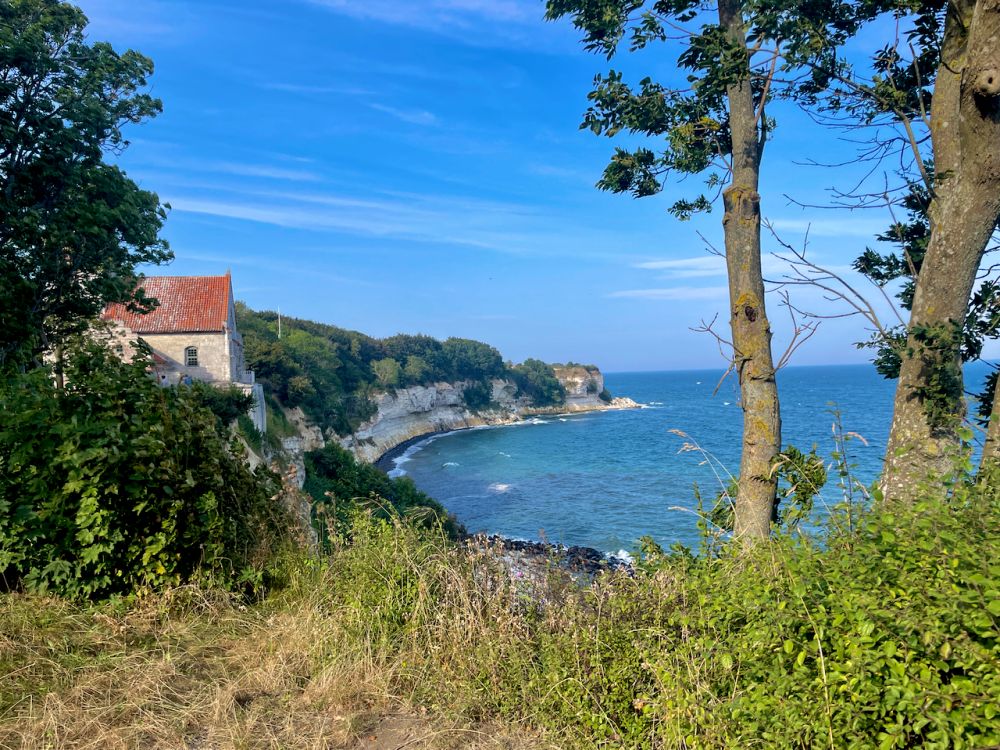
Is Stevns Klint worth visiting?
Absolutely! Stevns Klint is 100% worth taking a special trip for. You can easily spend an entire day exploring.
This geologically significant site offers walking trails, museums, and panoramic coastal views. Also, this place is truly unique—it’s one of the few places in the world where you can physically see traces of the asteroid impact that forever changed life on Earth.
What sorts of travelers would like Stevns Klint?
If you love nature, history, geology, scenic hikes, or are curious about Earth’s ancient past, you’ll enjoy visiting here. I personally loved hiking and camping along the cliffside so much that I ended up visiting twice.
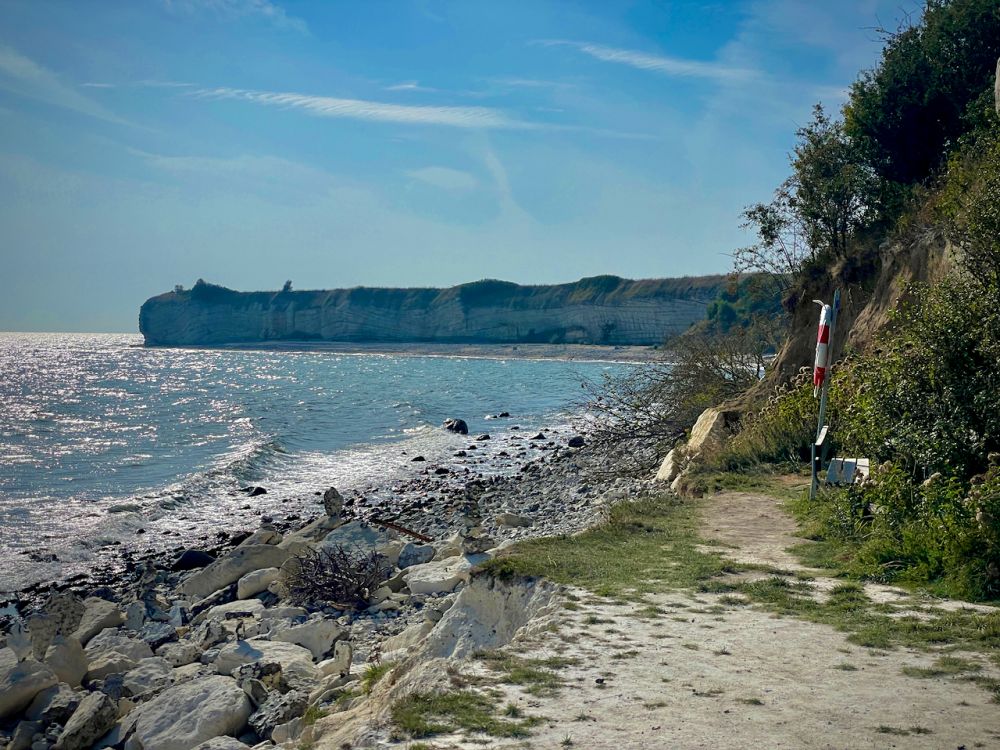
Tips for visiting Stevns Klint?
To avoid the crowds, visit on weekdays or during the spring or autumn months. Weekends and summer (June, July, August) tend to be busier.
If you’re coming from Copenhagen, plan for a full-day trip. With the travel time, hiking, and exploring, you’ll easily spend several hours at the site.
Most restaurants in the area don’t open until noon, so it’s a good idea to bring some food, especially if you’re visiting with kids.
Book accommodations near Stevns Klint.
Make use of the free electric shuttle bus to hop between the key attractions. It’s a convenient and eco-friendly way to explore. You can check the routes and schedule here: Andel electric bus.
For more flexibility, consider renting a bike from Donkey Republic, a bike-sharing system. You can pick one up at Store Heddinge, Højerup, or Rødvig.
And don’t just stick to the UNESCO fish clay site at Højerup. Explore beyond – visit the Experience Museum, wander along the beaches, and go for a scenic hike.
Roskilde Cathedral, also a UNESCO site, is about an hour away by car.
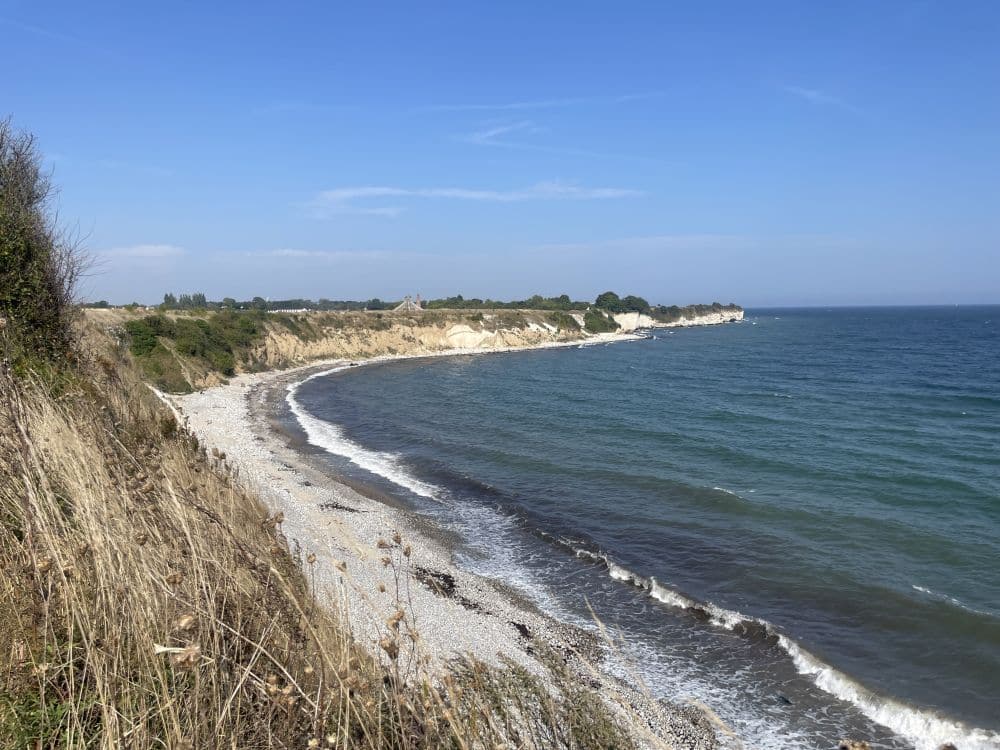
Where is Stevns Klint?
Stevns Klint is located on Zealand Island of Denmark, about 75 km (47 mi) from Copenhagen.
By car, the drive takes around 1.5 hours, and there are several parking areas near the cliff. The Højerup parking lot is the most convenient but requires a small parking fee.
Compare rental car prices here.
If you’re using public transport, it takes at least 2 hours from Copenhagen, as there are no direct buses or trains. To plan your route, use the Rejseplanen app, which shows all public transport connections, including prices.
Stevns Klint is free to visit. For more information, see its official website.
Have you been to Stevns Klint? If so, do you have any additional information or advice about this UNESCO World Heritage site? Please add your comments below!

